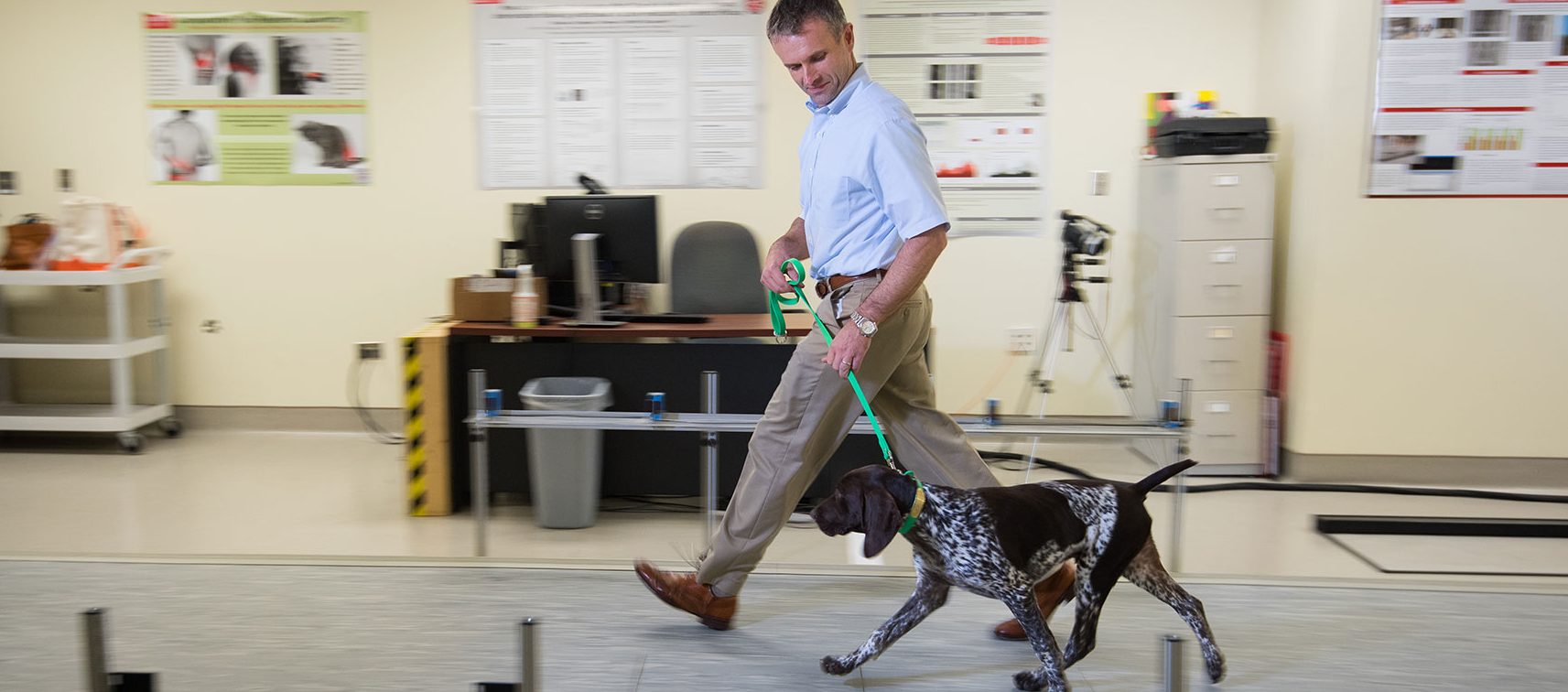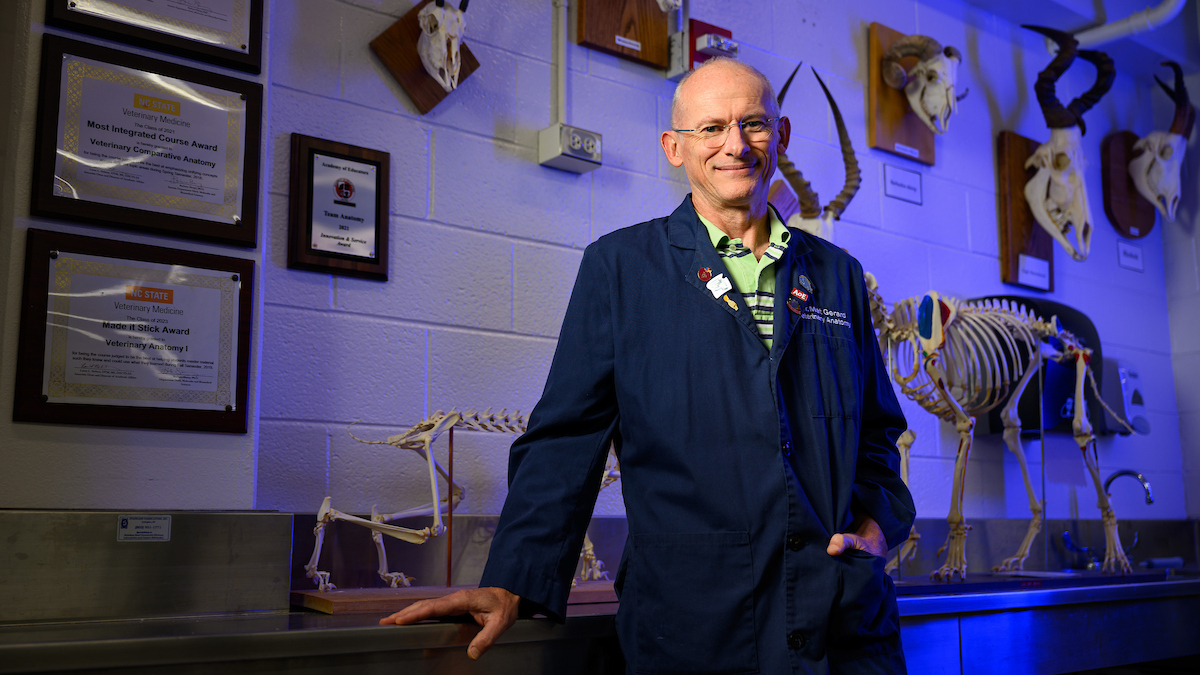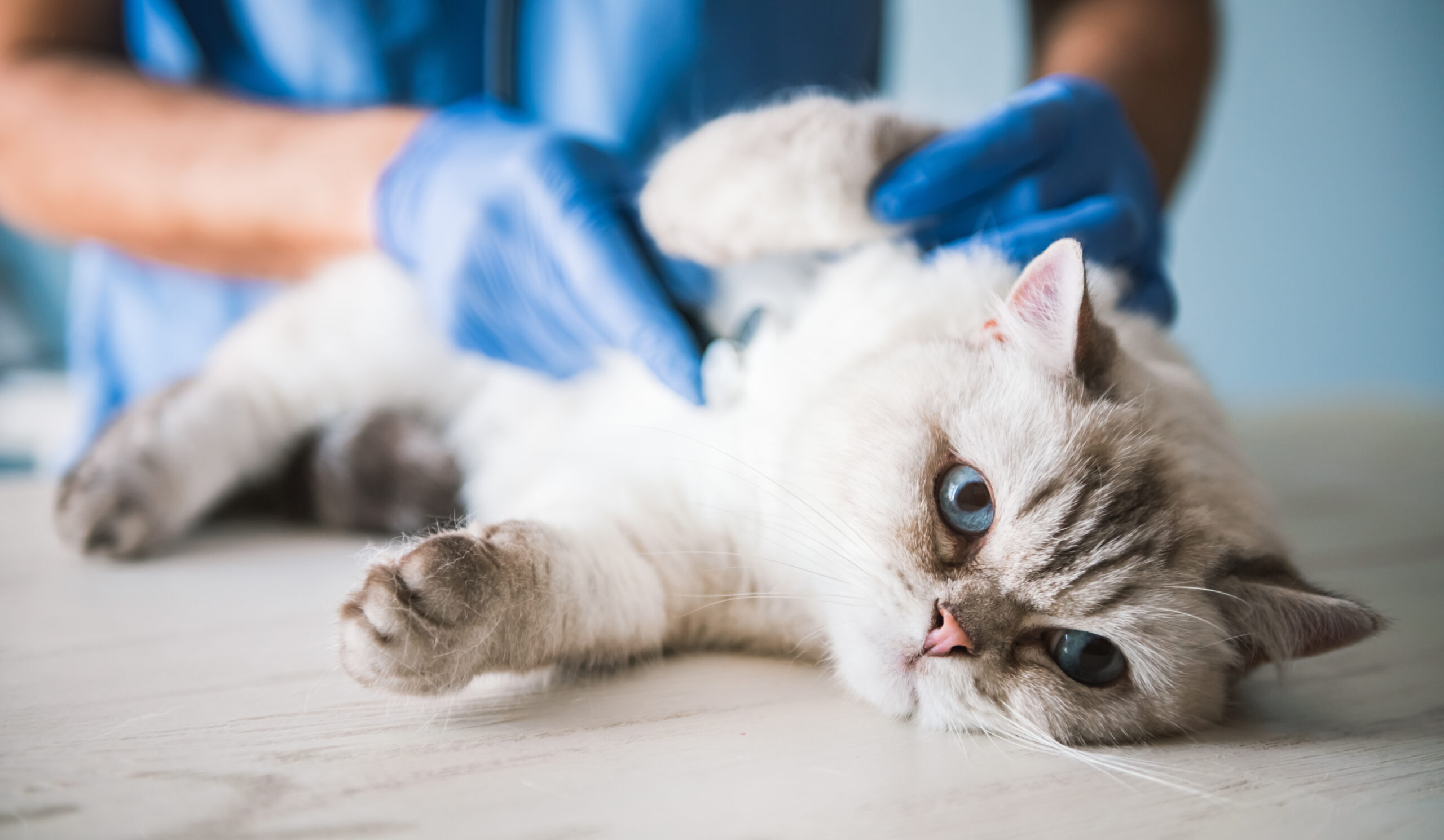Pain and Gain: Lascelles Leading the Way to Chronic Pain Relief

It’s no wonder he couldn’t sleep.
It was the night before the inaugural Pain in Animals Workshop. Duncan Lascelles wasn’t just nervous because he had been planning it for nearly two years — he was on the edge of a breakthrough in a subject he has been devoted to for more than two decades.
For the first time, clinicians from the worlds of veterinary and human medicine, representatives from the Food and Drug Administration, the National Institutes of Health and from animal health industry giants like Elanco, were coming together with one mission: to determine the best ways to measure and treat pain in animals.
Lascelles desperately wanted thoughtful conversation and he craved action. He got both.
“The idea of this meeting was not to bring people together so we can all scratch each others’ backs,” said Lascelles, NC State College of Veterinary Medicine professor of small animal surgery and pain management. “The idea was to bring people together to place on table what we know, what we don’t know and then, importantly, where do we go.”
After two days of speakers during the November meeting, covering topics ranging from securing federal approval of medication to kinetic evaluation of limb use and cancer pain models, Lascelles asked the group how many them wanted to see progress in the measurement of chronic pain. After everyone raised their hands, Lascelles described the two options before them.
They could go home, back to their own corners, and continue to do what they had always done before. Or they could come together in sincere collaboration and make progress that’s not just promising, but tangible.
“I don’t know the best way to describe it — elation,” said Lascelles. “The ball is rolling. We’ve started something big, and this is bigger than me. This will be big for everyone.”
A New Way Forward
Like humans, animals experience a wide range of chronic pain from conditions such as arthritis, muscle strain and nerve damage, but in veterinary medicine, chronic pain is not well understood and often underdiagnosed. The first step to a breakthrough: establishing and validating protocols for measuring and treating pain.
The Pain Animal Workshop — appropriately acronymed PAW — was a giant leap in modernizing chronic pain treatment in veterinary medicine and also just the beginning.
Culled from the massive number of ideas coming out of the workshop, Lascelles is already developing a roadmap, practically a mission statement. The priorities: changing the way we recognize pain in animals, creating targeted therapeutics and developing long-term approaches to easing pain associated with such conditions as spinal cord injury and even cancer in animals and humans.
“The roadmap will lay out what we know, what we’re good at in terms of measuring chronic pain and where the gaps are,” said Lascelles. “It’s going to lay out what needs to be done. It’s literally going to be a to-do list.”
The list will likely consist of vital puzzle pieces designed to fit together to advance veterinary pain management. That could mean new types of assessments for degrees of pain related to nervous system disorders — or even redefining what is considered neuropathic pain. It could propose ways for veterinary clinicians around the world to readily share pain assessment and treatment information with colleagues.
It could offer concrete ways for clinicians to work directly with industry partners and government agencies to accelerate development of new pain medications. In a sign of possible future collaboration, in the very least a recognition of PAW’s mission, the National Institutes of Health hosted the event
The list is a lot, but Lascelles is also advocating for more. A worldwide leader in the study of animal pain, he doesn’t just want to amend the way we approach pain treatment. Lascelles is pushing for a sea change.
Treating animals for pain has strong translational potential; what can help a dog suffering from a medical condition can very likely help a human suffering from the same disease since several affect both species in similar ways. Traditionally, most veterinary research involving drug development utilizes lab animals such as mice.
Lascelles believe progress on translational pain research goes hand-in-hand with clinical trials using companion animals that have naturally occurring diseases similar to people.
In recently published research, Lascelles showed that canine and feline osteoarthritis is strikingly similar to human osteoarthritis and used that as just one example of how centering pain research on companion animals can lead to chronic pain therapies for humans.
“There have been no new analgesics in humans for musculoskeletal pain for 25 years because the usual translational approach is not working,” said Lascelles. “Pain in pets can be a model for the human condition. But we can’t just talk about it. We have to live it.”
A Tireless Drive
Lascelles is a rare combination of pragmatist and dreamer; he thinks realistically but aims big. As a child, he was fascinated by the intricacies of human memory.
Soon after Lascelles arrived at veterinary school at the University of Bristol in his native England, he realized that the inner-workings of pain and memory were similar. A non-stop focus on pain has begun.
Pain management is also a personal mission.
“My dad technically died of a heart attack, but he died many years earlier because of chronic pain with arthritis,” said Lascelles. “His personality died. Chronic pain kills your personality.”
From the time he started working on his Ph.D. in the early 1990s to when he first arrived at the CVM in 2002, Lascelles saw his father become a different person. He was the type of person quick to start a chat with a stranger in a grocery store checkout line. In the end, said Lascelles, it was a struggle for his father to even get out of the house.
It very quickly become a struggle for him to do anything at all.
“What that did was give me a very personal reason for doing what I’m doing,” said Lascelles. “And it also reinforced that it’s all not just for veterinary medicine. Veterinary medicine is a vital partner with human medicine.”
When he came to the CVM, Lascelles mission was already clear — improve pain control in pets and help develop effective pain medicine for animals and humans. His impact on the field has been staggering.
At NC State, Lascelles runs the comparative pain research program. His Comparative Pain Research Lab has tirelessly worked on new methods to study the impact of pain in animals and tested new ways to spell relief. His scholarship is prolific, around 170 papers, with more than a third related to feline pain.
It’s groundbreaking work. His findings on canine osteoarthritis, feline degenerative joint disease and more have directly impacted how people practice veterinary medicine.
The work begun at PAW is similarly revolutionary. It also comes with a self-imposed timeline: 10 years. Lascelles said it’s a time frame that allows the group to foster direct collaboration, pursue money for clinical trials and then get to work.
“It’s going to be an aggressive plan,” said Lascelles, “but we will meet it.” “We have an opportunity to have a greater impact than an accomplishment of one veterinarian or researcher. It’s going to be for veterinary medicine. It’s going to be for translational research.”
“The bar is set high, and it’s now going in that direction.”
At a Glance: Duncan Lascelles
- Professor of small animal surgery and pain management; associate director, Comparative Medicine Institute; director, clinical studies core; leader, comparative pain research program
- Lab: Comparative Pain Research
- Joint Pain in Cats informational site.
- Research focus: Improving pain control in companion animals; drug development in human medicine using companion animal models; pain measurement neurobiology; pharmacology
Education
- Veterinary degree (1991), Ph.D. (1995), University of Bristol
- Surgical residency (1995-1999), University of Cambridge
- Fellowship, Oncological surgery (2000-2001), Colorado State University
- Post-doctoral research (2001-2002), University of Florida
- Professor, NC State College of Veterinary Medicine, 2002-present
Awards/recognition
- Diplomate: American College of Veterinary Surgeons, European College of Veterinary Surgeons
- 2017 American Veterinary Medical Foundation/Winn Feline Foundation Excellence in Research Award
- Research grants from the Morris Animal Foundation, Winn Feline Foundation, American Veterinary Medical Foundation and the Veterinary Pharmacology Research Foundation


